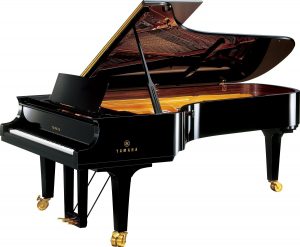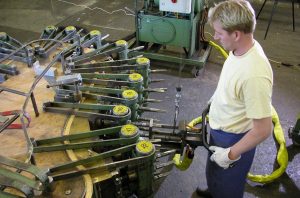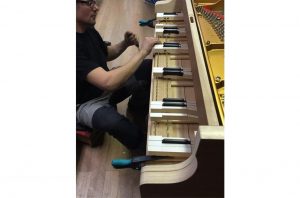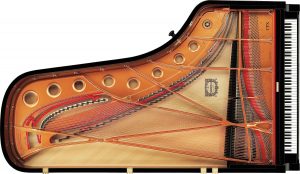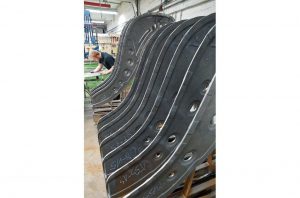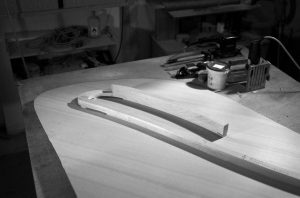Are you wondering how pianos are made? The making of a piano is a long and intricate process. More than any other instrument (except, perhaps, the organ) the piano comprises of thousands of moving parts that must be crafted and fitted together to create a beautiful and unique instrument.
As a pianist, you should know the parts of your instrument to understand how it works, how to care for it, and what to tell the tuner who comes to maintain your piano.
This article will pinpoint the major parts of the piano, how those parts are made, their functions, and what you can do with this knowledge.
The Exterior
Lid & Lid Prop
Seen on the silhouette of every grand piano, the lid is important to lift when playing in a concert. Even some upright pianos have lids that can be opened, as well as a lid prop to keep it open.
Lifting the lid allows the sound to escape, basically amplifying the volume and enriching the colors and dynamics heard. If playing with an ensemble, it is important to prop the lid open either half or full stick to get the best sound possible. It is also important to close the lid completely when not in use. This protects the interior from dust.
Rim
The rim is comprised of multiple layers of wood, which are glued together, stacked into one piece, and bent as seen below. The rim provides the piano its iconic shape and protects the soundboard and cast iron frame interior.
Music Stand (or Desk)
The stand used for music can be folded down in performances or when closing the lid. The music stand can also be completely removed, and doing so provides the best audio feedback for the pianist, as there is no interference with the sound.
Fallboard
The fallboard, or keyboard cover, is what folds up and down to cover and protect the keys. This is also important to close when not using the piano, and be very careful not to slam the keyboard cover when lifting or putting it down. When teachers tell students to play closer to the fallboard, it means to play inside the keys more, closer to the interior of the black keys.
Key Bed
The key bed is where the keyboard is placed. The entire keyboard can be removed from the key bed, and piano technicians will often pull out or remove the keyboard to work on the hammers and key action. They may even take your entire keyboard home for more complicated maintenance fixes!
Legs & Caster
Not all grand pianos have casters, which are the wheels at the bottom of the legs required to move the heavy concert grands. When moving a piano, piano movers will remove the legs and pedals to transport the piano through doorways. Never do this yourself!
Pedals (Sustain, Sostenuto, Una Corda)
There are three pedals on the grand piano, and anywhere from one to two on upright pianos. The right pedal is known as the sustain pedal, the middle as the sostenuto pedal, and the left as the una corda (or shift) pedal.
The sustain pedal (also known as the damper pedal) lifts the dampers off the strings, allowing the strings to continue vibrating when the key is released. The sound is therefore sustained until the pedal is lifted or until the string stops vibrating.
The sostenuto pedal lifts the damper of select notes while leaving the other dampers in place, allowing the selected notes to be sustained while the others are not.
The una corda pedal shifts the entire keyboard so that the hammers hit only two rather than three strings. The effect is both a softer sound and a change in tone quality.
The Interior
Soundboard
This is the most important part of the piano. In order for a piano to sound good, function well, and have good retail value, the soundboard must be intact without any cracks. Keeping the soundboard dust-free is also important for the maintenance of the overall instrument.
The soundboard is made completely of wood, and different companies use different kinds of wood, causing the differences in sound unique to each brand. The soundboard can expand or shrink based on the humidity and temperature of the room, so it is important to place your piano in a room without direct sunlight and without large fluctuations in temperature. Piano technicians recommend the use of a humidifier or air washer to help maintain the soundboard.
Iron Cast Frame
The frame is responsible for sustaining the high pressure of the strings to prevent the soundboard from bending and breaking. Pianos in the 18th-century used wooden frames, which meant that the tension in strings had to be less, resulting in a much softer sound.
With the invention of the iron cast frame in the 19th-century during the time of Franz Liszt, the concert grand piano evolved into a massive instrument with tremendous sound volume and power.
In the diagram above, the iron frame is the part colored with darker gold and spans the entire length of the interior. If you have ever had the pleasure of looking inside a concert grand in famous halls like Carnegie, you might see the signatures of famous concert pianists on the iron frame!
Hitch Pins & Tuning Pins
The hitch pins are near the end of the piano, where the strings are attached to the iron frame. The pins hold the strings in place, while the other end (the end closer to the keyboard) is wrapped around the tuning pins. The tuning pins are the pins used to adjust the tuning of the strings, and are turned with a special lever.
Bridge
Like the bridge on a violin, this part connects the strings to the soundboard and allows the soundboard to transmit and amplify the vibrations of the strings (see the raised wood on the soundboard picture below).
This part must also be able to withstand the high pressure of the strings and without it, the energy of the strings would not transmit to the soundboard and the piano would not have the volume it needs.
Strings
The strings of a piano vary in size and length depending on the pitch required. The large wires at the bottom end of the piano consist of copper wires wrapped around steel.
Dampers
Dampers are felt-padded levers that rest on top of the strings. All strings except the high register have dampers. They lift when a key is pressed to allow the string to vibrate, and fall when the key is released to stop the sound. The sustain pedal (or damper pedal) works by lifting all the dampers off the strings.
For further reading and information, check out these two websites for a look into the intricate process of making pianos.
Yamaha Instrument Guide: https://www.yamaha.com/en/musical_instrument_guide/piano/mechanism/
Making a Steinway:
https://www.classicfm.com/discover-music/instruments/piano/how-to-make-steinway/making-strings/
Alison Chiang

